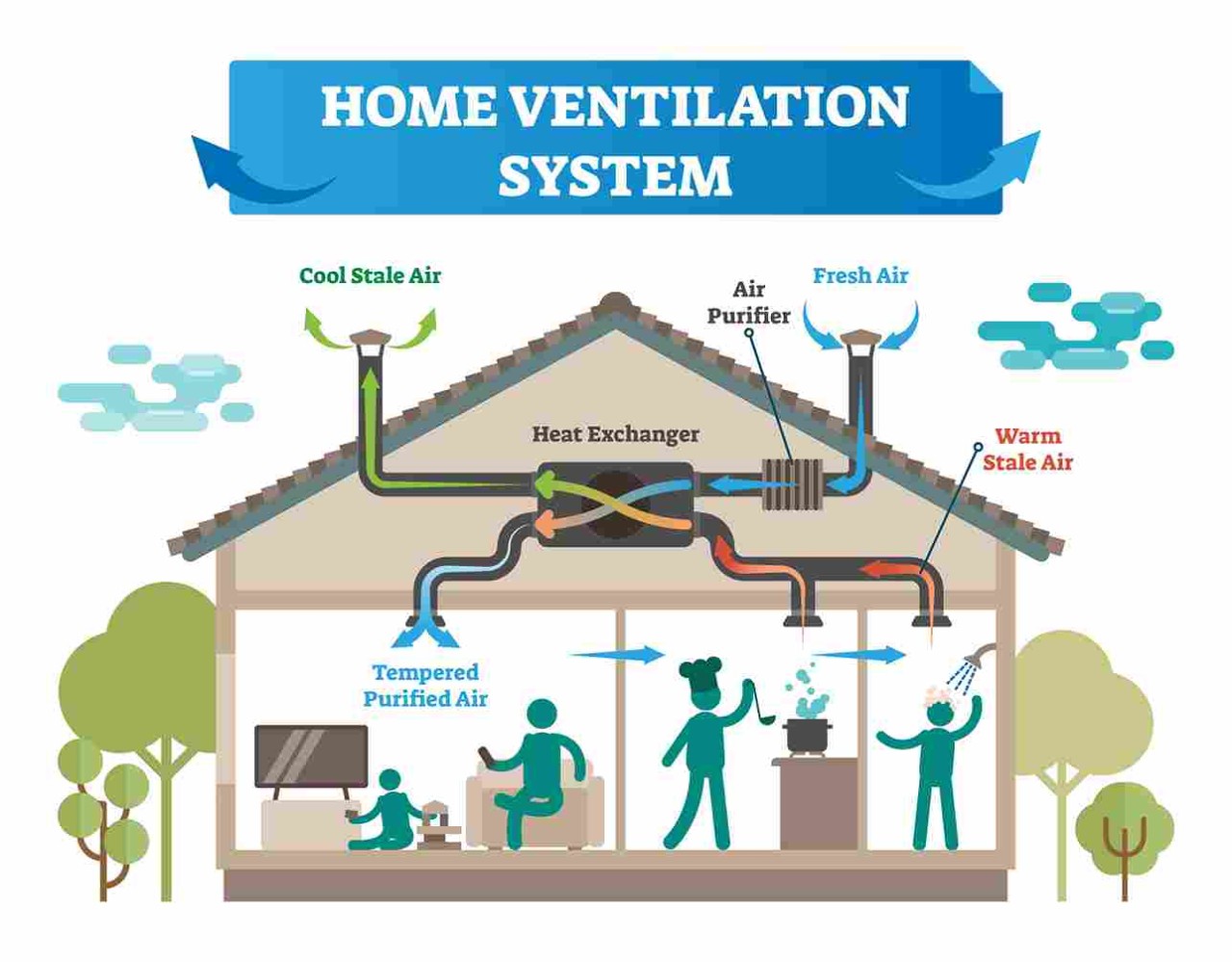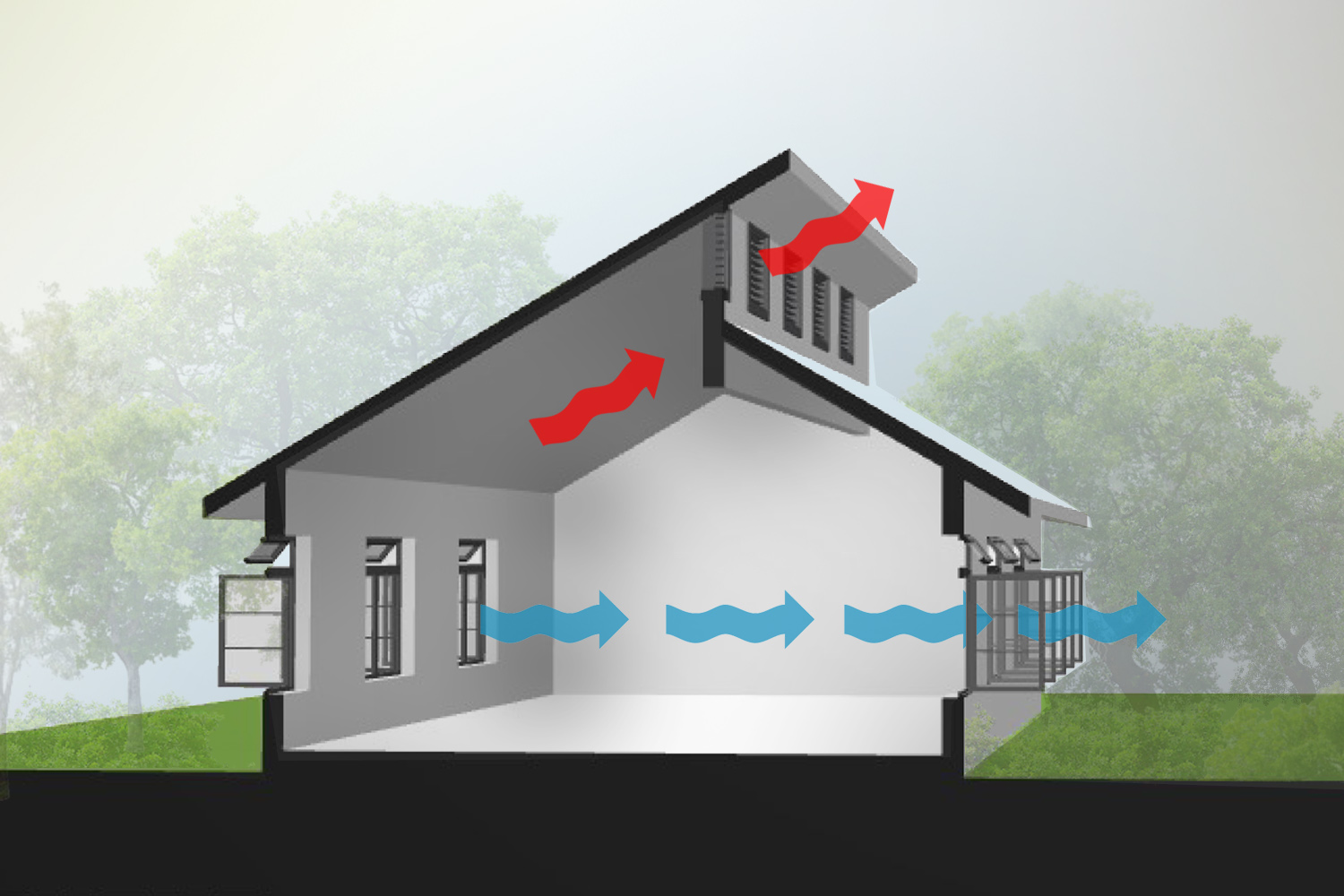Understanding the Importance of Home Air Flow for a Healthier Living Environment
Home air flow plays a crucial role in keeping a healthy living setting. It assists in the exchange of indoor and outdoor air, which is very important for enhancing air quality. Without appropriate ventilation, homes can come to be breeding grounds for allergens and contaminants. The repercussions of poor air circulation can be considerable. This raises the query of exactly how home owners can efficiently implement ventilation techniques to secure their wellness and well-being. Comprehending these methods is necessary.

The Fundamentals of Home Ventilation
Home ventilation acts as an essential element of interior air top quality and convenience. It entails the procedure of trading stagnant indoor air with fresh outside air, thus minimizing humidity and controlling temperature level. Proper air flow systems can consist of natural approaches, such as open home windows and vents, as well as mechanical systems, such as exhaust followers and air exchangers. Effective home ventilation aids prevent concerns like indoor mold and mildew development and the build-up of dangerous fragments. It also enhances general power efficiency, as well-ventilated rooms can maintain comfortable temperature levels with much less reliance on home heating and cooling down systems. Understanding the basics of home air flow is essential for house owners looking for to create a healthier living atmosphere for themselves and their families.

Usual Sources of Indoor Air Air Pollution

Although numerous might not realize it, indoor air contamination can stem from numerous sources within a family. Common contributors include unstable organic substances (VOCs) emitted from paints, solvents, and cleaning products. Household devices, such as gas cooktops and fire places, can release dangerous gases like carbon monoxide gas and nitrogen dioxide. Additionally, mold and mold grow in moist locations, launching spores that affect air high quality. Animal dander, dirt mites, and pollen can gather inside, further intensifying pollution levels. Smoking indoors creates toxic chemicals that linger in the air. Finally, constructing materials, including asbestos and formaldehyde, can off-gas damaging substances. Recognizing these resources is necessary for keeping a healthier indoor atmosphere and advertising effective air flow strategies.
Wellness Consequences of Poor Ventilation
Indoor air pollution can have substantial health implications, especially when ventilation is insufficient. Poor ventilation can lead to the accumulation of damaging toxins, such as unstable organic compounds, mold and mildew, and particle issue. This build-up may cause breathing problems, consisting of asthma, allergies, and chronic obstructive lung illness. Individuals might experience symptoms like migraines, tiredness, and irritability of the eyes, nose, and throat. Susceptible populaces, such as youngsters and the senior, are at higher risk for extreme wellness results. Lasting direct exposure to inadequately aerated environments can also add to extra major problems, including cardiovascular conditions. As a result, guaranteeing appropriate air flow is essential for preserving a healthy and balanced living atmosphere and lowering the threat of health issues related to interior air contamination.
Efficient Ventilation Approaches for Your Home
Correct ventilation is important for preserving a healthy interior atmosphere, and executing reliable methods can substantially enhance air quality. Home owners can begin by making certain that exhaust fans are mounted in bathroom and kitchens to eliminate excess moisture and odors. Opening up home windows frequently allows fresh air to distribute, specifically during light weather condition. Additionally, making use of air cleansers with HEPA filters can aid capture airborne toxins. For homes with heating and cooling down systems, maintaining heating and cooling systems and changing filters on a regular basis is essential for peak performance. Integrating all-natural air flow methods, such as cross-ventilation, can also enhance air movement. Sealing any kind of leakages in doors and windows prevents unwanted drafts, which can interfere with controlled air movement, inevitably leading to enhanced interior air high quality and comfort.
Keeping Optimal Air Quality Year-Round
To maintain excellent air top quality year-round, property owners need to take on a proactive strategy to handling their interior atmosphere. Regularly monitoring indoor air quality is vital; this consists of monitoring for toxins such as dirt, mold and mildew, and unpredictable natural substances (VOCs) Applying effective air flow systems, such as exhaust followers and air cleansers, can substantially lower airborne contaminants. In addition, regular maintenance of cooling and heating systems guarantees peak performance and find this air blood circulation. Homeowners should likewise think about humidity degrees, as too much wetness can result in mold and mildew growth. Seasonal changes might require changes in air flow methods to fit varying outdoor air quality. By prioritizing these practices, homeowners can develop a much healthier space, advertising total wellness for all residents throughout the year.
Frequently Asked Questions
Just How Can I Tell if My Home Requirements Better Air Flow?
To figure out if a home needs better ventilation, one should observe indications such as relentless humidity, mold and mildew growth, stuffy odors, condensation on home windows, or increased allergy signs and symptoms, suggesting poor air movement and potentially inadequate indoor air top quality.
What Are the Signs of Poor Indoor Air Top Quality?

Can Houseplants Improve Indoor Air Quality Effectively?
The effectiveness of houseplants in boosting interior air quality is debated. While some research studies recommend they can take in toxins and generate oxygen, their general influence might be minimal contrasted to correct ventilation and air purification systems.
How Often Should I Change My Air Filters?
The frequency of air filter adjustments normally depends on use and filter type. Usually, it is suggested to change filters every 3 months, though households with pet dogs or allergies might call for explanation more frequent modifications for optimal efficiency.
Are There Any Kind Of Specific Ventilation Solutions for Allergic Reaction Sufferers?
Several ventilation systems, such as HEPA-filtered systems, effectively decrease irritants airborne. Home Ventilation Melbourne. These systems trap pollen, pet, and dirt dander, supplying allergic reaction sufferers with a cleaner, healthier indoor atmosphere while taking care of air top quality effectively
It blog here facilitates the exchange of outdoor and indoor air, which is essential for enhancing air quality. Home air flow offers as an important element of indoor air high quality and convenience. It entails the procedure of trading stagnant interior air with fresh outside air, thus minimizing humidity and controlling temperature. Interior air pollution can have significant health implications, specifically when air flow is poor. Correct air flow is essential for keeping a healthy and balanced indoor atmosphere, and executing effective strategies can considerably improve air high quality.